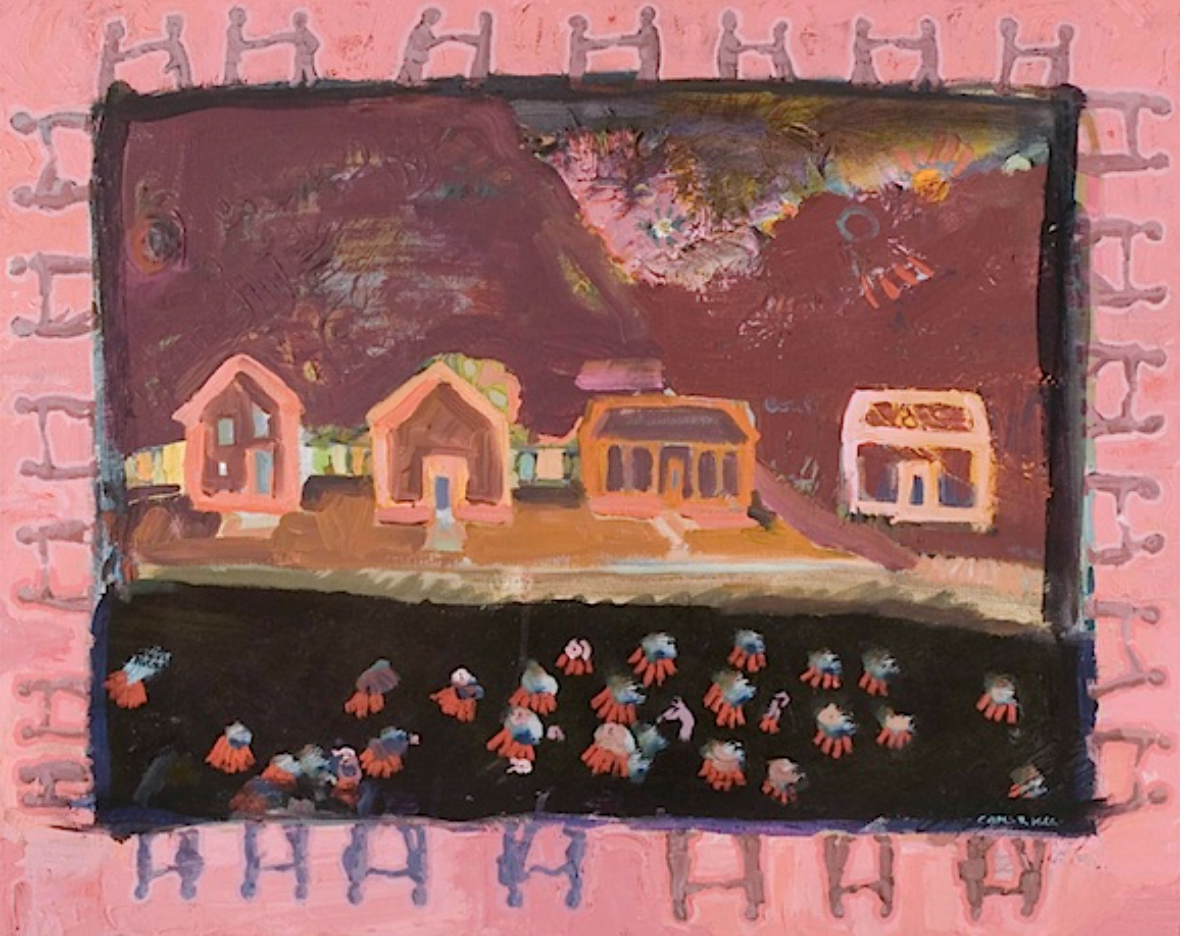Betsy Jaeger, American, born 1954
View from Home, 2020
View from Home is part of Betsy Jaeger’s current exhibition titled Requiem for a Neighborhood, which examines the effects of a strip mining project that was started and eventually abandoned in her neighborhood of Sugar Grove near Morgantown, West Virginia. The stripping company, after having made its money, declared bankruptcy and left the state of West Virginia to clean up after them, which because of budget concerns may never happen. Many of the works in the exhibition are painted from inside looking out; she contrasts the electricity-powered comfort of the interior with the visible long-term effects of burning fossil fuels in order to alert viewers to the cost of our comforts. Requiem for a Neighborhood also explicitly addresses a shift in the constructed identity of West Virginia as coal country: in Jaeger’s own words, the early 21st century is “a period of change from coal as king to coal as history.” Jaeger uses art specifically because of its accessibility and communicative ability; she wants both to draw attention to these issues for the people of the present and apologize to the people of the future for the damage we have done to the land. Label by Laura Reitze




